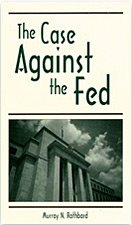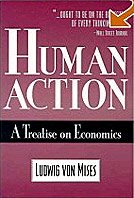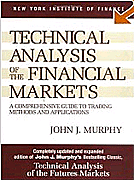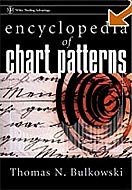When Atlas Shrugged *
Part One: The lure and lore of risk-free profits
by Antal E. Fekete,
Professor, Intermountain Institute for Science and Applied Mathematics, Missoula, Montana, USA.
August 24, 2006
by Antal E. Fekete,
Professor, Intermountain Institute for Science and Applied Mathematics, Missoula, Montana, USA.
August 24, 2006
I receive a lot of hate mail from loyal Barrick shareholders accusing me of “plunging my little dagger into Barrick’s back out of spite”. I can assure readers that my time is more precious than wasting it on petty revenge or indulging in Schadenfreude**. I am not trying to make Barrick appear smaller than it is. In fact, I am suggesting that Barrick is the modern Atlas carrying the entire derivatives market, currently estimated at $300 trillion, on its shoulders. The global derivatives market and Barrick’s ‘hedging’ program stand or fall together. In particular when Altas shrugged, there would be an earthquake measuring ten on the Richter-scale, and the derivatives market would go down the drain causing unprecedented economic pain in the world through the destruction of bond, stock, and real estate values.
Speculation versus gambling
It is amazing that the exploding derivatives monster finds apologists in the “free market” camp. This monster has been called “the most toxic element of the financial markets today” (Howard Davies, Chairman, U.K. Financial Services Authority), “a financial weapon of mass destruction carrying dangers that, while now latent, are potentially lethal” (Warren Buffett). Yet if you read the opinion of some people associated with the the Ludwig von Mises Institute and the Lew Rockwell website, then you get the impression that the $300 trillion derivatives monster is benign, even ingenuous, if misunderstood and unfairly maligned. Derivatives are good because they allow banks, industrial companies, and private individuals to shift risk to speculators who are happy to shoulder it. Risk people are ill-equipped to deal with is “traded away” so that they “can focus on tackling tasks in areas in which they specialize”. A typical example is an import/export company using foreign exchange derivatives to neutralize risks inherent in buying and selling abroad due to the fluctuation of the exchange rate. Another example is provided by people carrying a variable-rate mortgage, who are allowed to switch to a fixed-rate mortgage when they expect a rise in interest rates. The free market helps those who help themselves. This is what ‘division of labor’ is all about, the source of economic efficiency of which Adam Smith spoke.
This apology is rather grotesque. It ignores the fact that gyrating foreign exchange and interest rates are far from being free market institutions. They were created by the government in order to strangle the free market. These rates were stable under the gold standard. It is one thing to shift risks created by nature to the shoulders of speculators who are better able to deal with them, for example, in the case of the futures markets for agricultures products. It is another thing if the risks have been created by men (read: the government). In the former case speculation has a legitimate role; in the latter, the word ‘speculation’ is a misnomer. Dealing with risks created by man is not speculation. It is gambling. Failure to make this distinction is to play into the hands of the enemies of the free market. They suggest that speculation in foreign exchange and interest rate futures has a ‘stabilizing’ effect on these rates, no less than speculation in grain futures has on grain prices. The message is that there is nothing to worry about. The regime of irredeemable currency is here to stay and it will create its own institutions to confront economic problems as they come along.
The carry trade
This message is false. Speculation in foreign exchange and interest rates does not have a stabilizing effect. As in the casino, more bets do not subdue the gambling spirit; rather, it will heighten it. Moreover, not all derivatives have arisen out of ‘risk management’. An unknown but apparently very large part takes its origin in the ‘carry trade’, the practice of creating something out of nothing (more accurately described, clandestinely siphoning off value from the balance sheet of the producing sector and transfer it to that of the financial sector). It consists of borrowing at a low and investing the proceeds at a high rate of interest. For example, consider the yen carry-trade involving the sale of high-priced Japanese bonds and the purchase of cheap U.S. bonds with the proceeds, thus swapping a 2 percent per annum outlay for a 5 percent per annum income. Since it takes a long time for the interest rate spread between the U.S. and Japan to close, pyramiding can be continued indefinitely. It cannot be denied that the carry trade adds materially to the $215 trillion ‘notional’ value of the Bond Derivatives Tower of Babel.
Official check-kiting
Government bonds today are not a legitimate instrument of saving as gold bonds of yesteryear were. They are supposed to have value because they are payable in FR notes at maturity. But what gives value to the FR notes? Why, it is the fact that they are liabilities of the issuing FR bank, backed by assets such as government bonds. Thus, then, there is an official check-kiting between the US Treasury and the Federal Reserve. The former issues bonds with which FR notes are backed; the latter issues notes used to pay off the bonds at maturity. This is no free market. It is a parody of the free market or worse. It is a charade designed to fool and defraud people. In effect the government bond is irredeemable, no less than the FR note.
If the bond appears to have value it is solely because bond speculators are, for the time being, willing to bet that producers will continue to accept it in exchange for real goods and services, and that there will be a demand for the notes by taxpayers anxious to pay their taxes. But don’t take this willingness for granted. Bond speculators are not running a charity to bail out profligate and bankrupt governments. If, in their judgment, too many of those bonds are owned by foreigners who are not subject to the taxing authority of the U.S. government, or the producers of crude oil, for example, are increasingly reluctant to accept FR credit in payment, then bond speculators will, without prior notice, withdraw their bets -- with fatal consequences to the fortunes of Treasury obligations. Note that the term “bond speculator” covers big-league banks and hedge funds with bond positions running into trillions.
Whitewashing illegitimate derivatives using free market rhetoric will not legitimize them. To sing a song of praise of ‘financial innovations’ designed to justify and perpetuate official check-kiting is not fitting for a defender of the free market.
Big Bang
It was not until 1973 that the Chicago Board of Trade opened its Options Exchange to trade options on financial futures marking Big Bang, the beginning of the explosive growth of the derivatives market. Notice the coincidence of Big Bang with the U.S. government’s default on its international gold obligations. Incidentally, the same year marked the explosion of volatility in commodity prices as well.
The derivatives market grew from zero to $865 billion during the 15 years from 1972 to 1987. During the next 15 years, from 1987 to 2002, it grew to $100 trillion, or more than 100-fold. It trebles on average every four years. The latest report of the Bank for International Settlements states that the gross market value of amounts outstanding in the over-the-counter derivatives markets at the end of December, 2005, was $285 trillion, of which the largest component, the interest-rate derivatives contracts was $215 trillion.
The amazing thing is that the total value of bonds outstanding world-wide is estimated at only $45 trillion. How can you write contracts to buy bonds, five times greater in amount than all the bonds in existence? Does this not give the lie to the word ‘derivatives’, meaning that these contracts ‘derive’ their value from the underlying assets? What kind of ‘musical chairs’ game is this? When the music stops, what will happen to those who are out of luck and hold the bag?
‘Telescope effect’
Defenders of the derivatives market insist that its growth is quite benign. Malignancy is explained away by the need of banks and other financial institutions, as well as industrial corporations, to hedge their interest-rate risk-exposure. The word ‘notional’ was introduced to cover up dangers involved in constructing this unprecedented Tower of Babel. The word means ‘fictional’, or ‘not having a real existence’. The idea is that behind the growth of the derivatives markets there is an increasing chain of swaps as companies are switching their debt-servicing back-and-forth between fixed-rate and fluctuating-rate income streams. There is nothing to worry about that, the defenders of this Ponzi-scheme say, because of the ‘telescope effect’ operating on income-stream swaps. The notional value of swaps may appear very large and seems to be growing very fast. But all this is an optical illusion, they say, because swapped payment-streams net out or cancel. No party to the contract demands that non-existent bonds be delivered upon expiry.
One defender takes the example of a company wishing to change its floating-rate loan into a fixed rate loan because it expects that interest rates will rise. It could renegotiate the loan with lenders, or it could retire the debt and reissue a new fixed-rate debt. However, these are expensive maneuvers. It is cheaper to find a counter-party who will take over the floating-rate payments for a consideration, while the company will make fixed-rate payments to it. The two swap. They do not swap the actual underlying bonds. They swap income-streams represented by the semi-annual interest-payments.
Conversely, if interest rates are expected to fall, then the company will want to change its fixed back into a floating-rate loan.
Dumping non-existent bonds
This argument ignores the problem of what happens in a panic when interest rates take off and bond values start falling like a rock. Then everybody wants to dump the obligation of making floating payments, but there will be no counter-party to assume it. An additional criticism is that the ‘telescope effect’ operates on the string of payment-stream swaps only if made between the same two parties, which is hardly ever the case. In general, the market value of the right to receive the fixed payment stream does not ‘telescope’. Every swap adds the value of the underlying bond to the balance sheet of one party or the other, without the benefit of the ‘telescope effect’. Yes, there is pyramiding of derivatives. It is foolish to think that ‘derivatives’ will retain their value when the bonds from which this value is supposed to have been ‘derived’ have lost theirs.
A third criticism concerns the fact that the bond and gold derivatives markets are interdependent. As in the former the long-interest and in the latter the short-interest gets bloated, disequilibrium keeps growing. It will ultimately act as a trigger. This will be more fully explored in Part 2.
In the absence of derivatives the panic would run its course and bond values, having absorbed the loss, would eventually stabilize at a lower level. In 1980 the runaway train could still be stopped before it derailed. But with a derivatives market of the present size such a panic would be tantamount to a stampede to sell up to $200 trillion worth of bonds which nobody wanted to buy. Nothing could stop this runaway train. The credit of the U.S. government would be ruined.
The problem is not that delivery of non-existent bonds is expected at the maturity of contract. The problem is that there will be an irresistible run to dump non-existent bonds when the underlying bond starts losing value precipitously, that is, when interest rates repeat or surpass their 1979-80 performance of entering stratosphere. In that episode, it will be recalled, the largest American banks became insolvent as the value of bonds in their portfolios collapsed, making huge holes in the balance sheet.
Fate of Sodom and Gomorrah
What is surprising is not that it could happen. Government bonds are the tangible result of check-kiting pretending that ‘NSF’ checks have value. For a time people accept them as such but sooner or later the truth will dawn on them. At that point the value of bonds, whether fixed or floating rate, is doomed and will be wiped out like the biblical towns of Sodom and Gomorrah have been.
What is surprising is that economists, among them free-market protagonists, fail to see in the derivatives market and in its unlimited exponential and cancerous growth the very mechanism, the fire and brimstone ordained by God that, in the fullness of times, will annihilate Sodom and Gomorrah. Instead, they sing a praise of “market innovation”, of “economic efficiency”, of the “Wonderful Wizard of Risk Control”, and of the “neutrality and usefulness of derivatives”, when they should sound the alarm and forewarn people of the impending catastrophe.
Gold derivatives
The latest report of the Bank for International Settlements on the over-the-counter derivatives of major banks and dealers in the G-10 countries for the period ending December 31, 2005, lists the total notional value of all gold derivatives outstanding as $334 billion at year-end, an increase $46 billion from $288 billion at midyear. Gold available for delivery has not increased nearly at this rate and the total value of outstanding gold derivatives exceeds the value of gold available for delivery by a large and increasing factor. Clearly, there is no ‘telescope effect’ at work here.
It is no coincidence that the amount of outstanding contracts is so much larger than the amount of underlying assets, both in the case of gold and bond derivatives. The dynamics of the growth of the derivatives market is hardly spontaneous. Here is the reason why.
The government has the following desiderata:
(1) to have a floor below the bond price;
(2) to have a ceiling above the gold price.
Indeed, without such a floor and ceiling, the bluffing epitomized by check-kiting could be called, and the international monetary system would unravel.
The lure of risk-free profits
To promote these desiderata, the bond and the gold markets are manipulated. It is true that the Treasury and the Federal Reserve prefer not to play a direct role in it. Speculators are induced to do it for them through the lure of risk-free profits.
Simply put, the role of the derivatives market is to make phantom bonds available to buy, and phantom gold available to sell, for the benefit of speculators. It is no problem to make speculators want to buy phantom bonds. They have the incentives. They know that the Federal Reserve is going to buy, rain or shine. This offers a risk-free opportunity for profits. All the speculators have to do is to pre-empt Federal Reserve purchases, that is, to buy beforehand. So let them.
The tricky part is how to make speculators want to sell phantom gold. This problem is solved by setting up a gold mine as a front, beefing it up as the world’s largest gold-mining concern, and letting it introduce a phony hedge plan. Let’s call it Sarrick Gold. The hedge plan of Sarrick calls for selling but never buying gold forward. The plan is then promoted as an essential ‘risk-management’ tool for the company, which is supposed to ‘stabilize revenues’ and even enhance them. It is alleged that forward selling also serves ‘to satisfy the banks that finance Sarrick’s mining operations’. Other hare-brained gold mining companies chime in: “Me too! Me too!”
But since no forward purchases complement forward sales (as they should if it were an honest-to-goodness hedging program), speculators abandon their traditional spot on long side of the market, and make the short side their haunt. They now have a risk-free opportunity for profits in short-selling gold. Speculators know that Sarrick is going to sell whenever the gold price is itching to rise. All they have to do is to pre-empt Sarrick’s sales, that is, to sell beforehand. So let them.
The lore of risk-free profits
You don’t have to go any further than that to explain the inordinate size of the derivatives markets in bonds and gold, and their cancerous growth. It is uninhibited pyramiding, pure and simple. Speculators pyramid on the long side of the bond derivatives market; and they pyramid on the short side of the gold derivatives market. In Part 2 we shall see that, far from supporting one another, the two activities tilt the imbalance more and more away from equilibrium so that, eventually, the pyramids will topple.
The gold standard rules out risk-free profits and unlimited pyramiding. That is its main excellence. The regime of irredeemable currency makes risk-free profits and unlimited pyramiding possible. That is the main reason that it will self-destruct in due course through the crash of the Derivatives Tower of Babel.***
To recapitulate, apologists suggest that the derivatives market is largely due to prudent risk-management, in the form of swaps between fixed and floating-rate payment-streams. Other contributing factors can be neglected. At any rate, there is nothing to worry about: payments streams are netted out and will stay manageable.
I emphatically disagree. I argue that the bulk of the derivatives market is due to positions motivated by the lure of risk-free profits. The lure is planted by the Treasury and the Federal Reserve. In particular, there is no limit to pyramiding for bonds on the long and for gold on the short side of the market, since there is no limit to human greed and thirst for power. This is not a condemnation of the individual speculator who, like everyone else, is trying to eke out a living. He is not responsible for bringing about false incentives. The responsibility for that rests squarely with the government.
In the second and concluding part I shall draw attention to the fact that the bond and gold derivatives markets are interdependent: the former is subordinate to the latter. Gold plays a pivotal role in the operation of the bond market in terms of ‘Gibson’s Paradox’. Default in gold derivatives will bring about the collapse of bond derivatives, with incalculable consequences to human welfare.
Endnotes
* With apologies to Ayn Rand, author of Atlas Shrugged.
** Schadenfreude is German, meaning the pleasure felt over other’s misfortunes.
*** Derivatives per se are not necessarily evil. Futures markets functioned quite well during the gold standard. It is conceivable that a sophisticated derivatives market would function optimally again in a world with a working gold standard. Agents may partake in derivatives for insurance against risks created by nature. Also, speculators may use derivatives to offer liquidity services against such natural risks.
© 2006 Antal E. Fekete
Professor, Intermountain Institute for Science and Applied Mathematics, Missoula, Montana, U.S.A.
Labels: Antal Fekete, gold, gold standard















![[Most Recent Quotes from www.kitco.com] [Most Recent Quotes from www.kitco.com]](http://www.kitco.com/images/live/t24_au_en_usoz_6.gif)
![[Most Recent Quotes from www.kitco.com] [Most Recent Quotes from www.kitco.com]](http://www.kitco.com/images/live/au_go_0030_ny.gif)
![[Most Recent Quotes from www.kitco.com] [Most Recent Quotes from www.kitco.com]](http://www.kitco.com/images/live/au_go_0365_ny.gif)
![[Most Recent Quotes from www.kitco.com] [Most Recent Quotes from www.kitco.com]](http://kitconet.com/charts/metals/silver/t24_ag_en_usoz_4.gif)

















0 ΣΧΟΛΙΑ (COMMENTS):
Post a Comment
<< Home